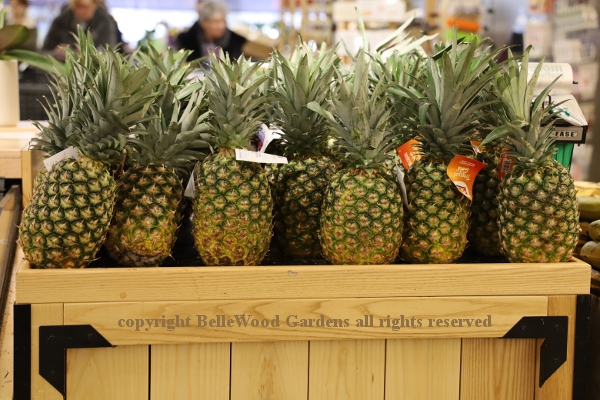
.
If you have any comments, observations, or questions about what you read here, remember you can always Contact Me
All content included on this site such as text, graphics and images is protected by U.S and international copyright law.
The compilation of all content on this site is the exclusive property of the site copyright holder.
Tropical Fruit
Saturday, 29 February 2020
We take for granted an incredible diversity of fruit,
both temperate and tropical, available year round.
Once upon a time the only available fruits would have been regionally local ones. Apples would have been the winter fruit, with development of cultivars suitable for long term storage. Oranges would have been a holiday treat. Unless, that is, your 17th to 19th century grand estate had an orangerie, a specialized glasshouse where orange and other citrus trees were protected during the winter. But it was the pineapple which became a symbol of luxury.

Once upon a time the wealthy estates in Great Britain had special glasshouses for growing pineapples, having learned from the Dutch who were the first successful Europeans to do so.

Agneta Block and her garden Flora Batava at Vijverhof, by Jan Weenix, 1693.
Notice pineapple in lower left. Not an imported fruit, it is an actual plant, in a pot, bearing a small pineapple. It was in 1687 that Meevrow Block successfully grew the first European pineapple plant in the Vijverhof hothouses. The pineapple became a symbol of hospitality: very often a pineapple would stand on a rich man's dinner table as centre-piece. Not to be eaten, but kept on display until it rotted. Pineapples were so rare, so expensive. If you could not manage its cultivation on your own estate, why, one could hire a pineapple for a dinner party.
My thanks to Carla Teune, friend and hortulana emerita
of the Leyden Botanic Garden for this useful information.

In Great Britain pineapple cultivation required a specialized "pinery-vinery" glasshouse.
Grapevines planted outside were trained inside, forming a green roof under the glass.
As this recent BBC article shows, the story of the passion for pineapples still interests us.
It was a two stage process: young plants were grown in pit houses where rotting tanbark over a layer of manure over a bottom layer of gravel provided even warmth. From there, the potted plants would be moved to a heated stove house to finish fruiting. When produced, the pineapple would be displayed at dinner parties as pièce de résistance. By the second half of the 18th century their production became the subject of tremendous rivalry between wealthy aristocrats.
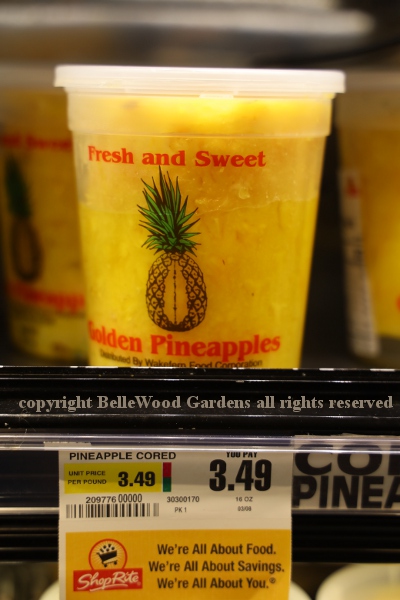
Today, pineapples are an every day, year-round item. You can buy them intact with
rind and leafy topknot. Or already neatly trimmed, peeled, cored and ready to serve.
 .
.
Clementines, with their zip-off peel and sweet pulp. Kiwis, with fuzzy skin and jade green flesh.
Back in the 1960s Frieda Caplan of specialty produce fame saw potential in the little known fuzzy brown fruit then called Chinese gooseberry. According to her daughter, one day someone asked Frieda, what does that Chinese gooseberry look like? And she said, horse turds. Unable to change its looks, changing the name to kiwi (the fruit is grown in New Zealand) was a game changer for the fruits' popularity. And gave Frieda the sobriquet of Kiwi Queen.
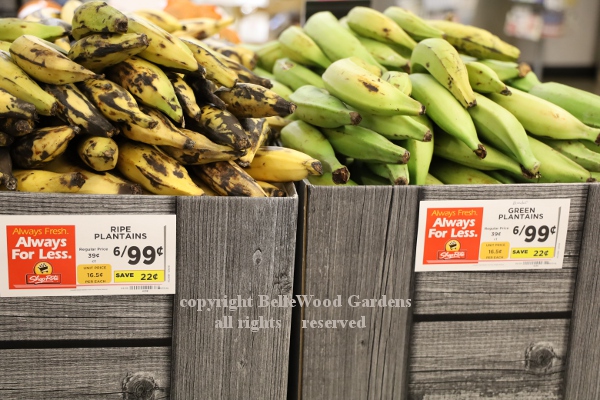
Bananas? Not quite. These are plantains, green and ripe. Yes, you can cook bananas.
But most of the time we enjoy them raw, and only when ripe. Whether ripe or green,
you'd only want to eat cooked plantains. They're tough, starchy, and not very sweet.
Both green or ripe plantain are used in Caribbean, Latin American and African dishes.
 .
.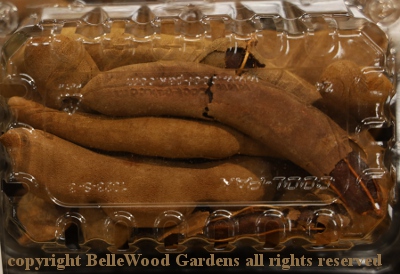
You may have had tamarindo, all unknowing. It is a main ingredient in Worcestershire sauce.
The sticky date-like pulp has a sweet-sour flavor and is often used in combination with curries
and chutneys, popular in East Indian and Middle Eastern cooking
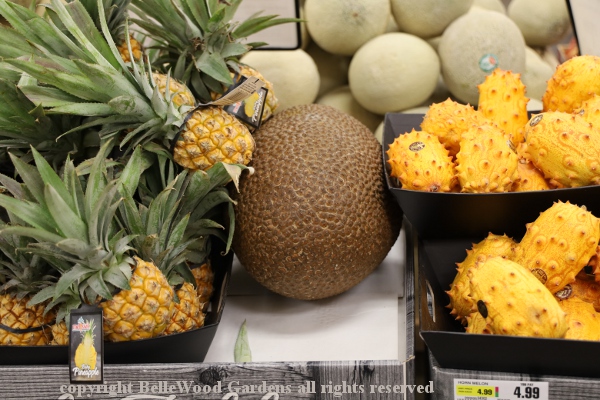
Small sweet baby pineapples have an edible core, and are nicely sized for an individual serving.
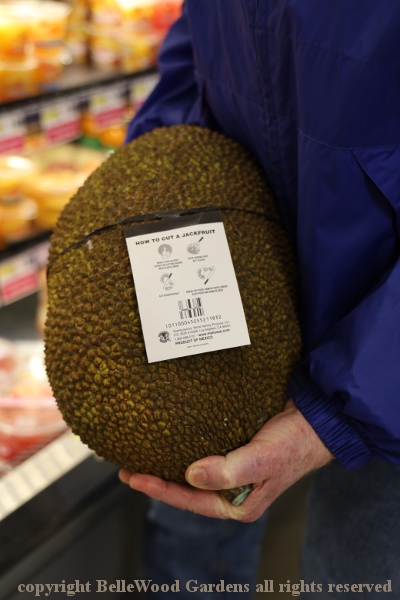
Warty brown skinned jackfruit may be eaten green or ripe, and seeds are eaten too. Think this is big? Jackfruit can weigh as much as 80 pounds. A mature tree produces up to 200 fruits a year, older trees as many as 500. Depending on where - in South or Southeastern Asia or Africa - the unripe fruit might be cooked in coconut milk, prepared in a savory salty dish with smoked pork, or in a curry. Ripe jackfruit is more often used in desserts.
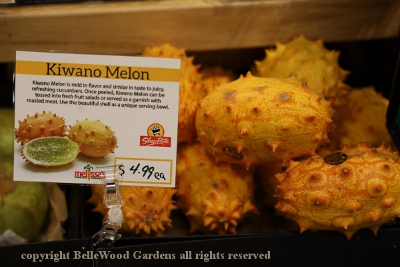 .
.
A fruit with many names, Cucumis metuliferus is commonly called kiwano or horned melon, it has also been called spiked melon, African horned cucumber or melon, jelly melon, or melano. An annual vine in the cucumber and melon family, the spiky, golden-orange shell of kiwano covers a soft, bright emerald green flesh filled with edible seeds. It is said to taste somewhat like a cucumber, with hints of melon and lime.
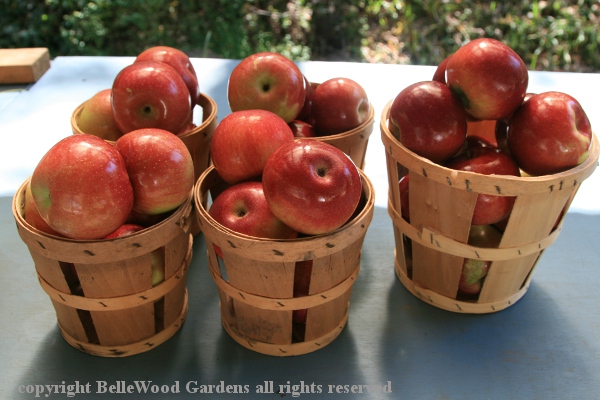
But even with all these exotic possibilities apples retain their appeal. Whether to be
eaten fresh out of hand, turned into cider, baked into a pie, apples remain popular.
Back to Top
Back to February
Back to the main Diary Page